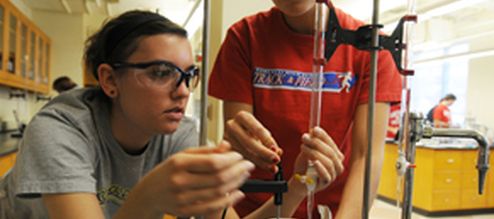New hypotheses about the structure–function of proprotein convertase subtilisin/kexin type 9: Analysis of the epidermal growth factor-like repeat A docking site using WaterMap
Document Type
Article
Publication Date
2010
Publication Source
Proteins
Abstract
LDL cholesterol (LDL-C) is cleared from plasma via cellular uptake and internalization processes that are largely mediated by the low-density lipoprotein cholesterol receptor (LDL-R). LDL-R is targeted for lysosomal degradation by association with proprotein convertase subtilisin-kexin type 9 (PCSK9). Gain of function mutations in PCSK9 can result in excessive loss of receptors and dyslipidemia. On the other hand, receptor-sparing phenomena, including loss-of-function mutations or inhibition of PCSK9, can lead to enhanced clearance of plasma lipids. We hypothesize that desolvation and resolvation processes, in many cases, constitute rate-determining steps for protein–ligand association and dissociation, respectively. To test this hypothesis, we analyzed and compared the predicted desolvation properties of wild-type versus gain-offunction mutant Asp374Tyr PCSK9 using WaterMap, a new in silico method for predicting the preferred locations and thermodynamic properties of water solvating proteins (‘‘hydration sites’’). We compared these results with binding kinetics data for PCSK9, full-length LDL-R ectodomain, and isolated EGF-A repeat. We propose that the fast kon and entropically driven thermodynamics observed for PCSK9EGF-A binding stem from the functional replacement of water occupying stable PCSK9 hydration sites (i.e., exchange of PCSK9 H-bonds from water to polar EGF-A groups). We further propose that the relatively fast koff observed for EGFA unbinding stems from the limited displacement of solvent occupying unstable hydration sites. Conversely, the slower koff observed for EGF-A and LDL-R unbinding from Asp374Tyr PCSK9 stems from the destabilizing effects of this mutation on PCSK9 hydration sites, with a concomitant increase in the persistence of the bound complex.
Inclusive pages
2571-2586
ISBN/ISSN
0887-3585
Copyright
Copyright © 2010 Wiley-Liss Inc.
Publisher
John Wiley & Sons
Volume
78
Peer Reviewed
yes
Issue
12
eCommons Citation
Pearlstein, Robert A.; Hu, Qi-Ying; Zhou, Jing; Yowe, David; Levell, Julian; Dale, Bethany; Kaushik, Virendar K.; Daniels, Douglas S.; Hanrahan, Susan; Sherman, Woody; and Abel, Robert, "New hypotheses about the structure–function of proprotein convertase subtilisin/kexin type 9: Analysis of the epidermal growth factor-like repeat A docking site using WaterMap" (2010). Chemistry Faculty Publications. 95.
https://ecommons.udayton.edu/chm_fac_pub/95
COinS



